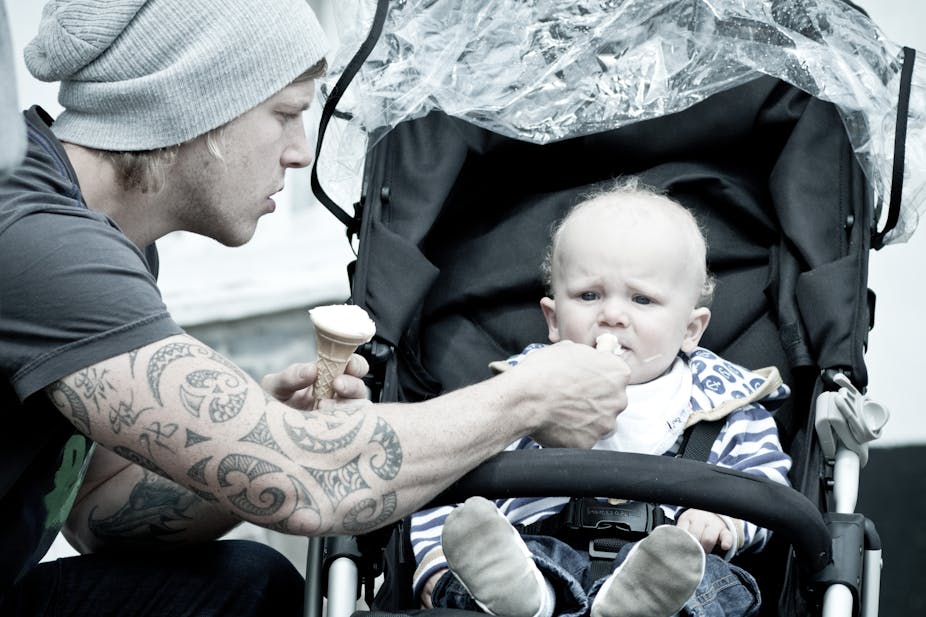Here is a social experiment you can conduct on your next trip to the local garage. You need one woman and one man who are willing to pretend to buy a car. Tell the person selling the car that the woman will be the main driver and will pay for the vehicle. Then take note of who the seller addresses and how the dynamic unfolds. Chances are your experience will depend on your gender.
Being a woman, you may find yourself disappearing. Puff! The answers to your (reasonably well-informed) questions are likely to be directed to your male partner. He will also likely be the one handed the brochure and offered the test drive. Yet – take a note, marketers – research shows that this would actually discourage the female buyer from the car purchase.
Psychologists refer to this as gender bias – and the marketplace is full of it. In fact, if you were an alien preparing to visit Earth and used advertising as your main source of information about humans you would form a largely inaccurate picture of men and women.
Multiple studies have shown that, all over the globe, the representation of gender in advertising is still based on old stereotypes. Women are typically portrayed as younger than men and at home as opposed to at work. They are also depicted as users of products while men are typically the experts – they provide the factual arguments for the product while women often remain silent.
Such advertisements do not reflect the changing gender roles in which men and women are becoming more equal both in work and family settings. As a result, there is an increasing backlash from consumers to overt gender bias in advertising. Recall reactions to the “beach body ready” campaign in London, for example. More recently, Zara’s “love your curves” campaign featuring very thin women to advertise jeans intended for curvier women faced a lot of criticism on social media.
Research shows that women are less keen to buy products portrayed as “male” in advertising, such as financial or car services. The same is true for ads which threaten their social identity with, for example, idealised or unachievable standards.
More worryingly, consuming advertising that is based on gender stereotypes has been shown to have numerous negative effects on women – resulting in lower ambition, reduced interest in politics and under-performance on maths tests.
This can have significant economic repercussions as it results in women shying away from the best-paid jobs, which are typically in traditional male domains such as engineering and politics. In fact, there is currently an acute shortage of female talent joining the STEM (Science, Technology, Engineering and Maths) workforce in the UK, where they represent only 14.4% of employees. This has an economic cost not only for the individuals but also for the UK economy as a whole.
Making room for the modern man
But it’s not all bad news. Lately, there has been a slight shift in the portrayal of men in advertising. They are gradually and increasingly being depicted in “softer”, more egalitarian roles – such as interacting with their children. And there is actually ample and consistent evidence that such underused non-traditional male depictions in advertising are more effective than the traditional ones (the working man).
For example, in our online experiment, we showed participants one of two possible versions of an ad for a gender-neutral product (mineral water) featuring a househusband or a businessman. The former was not only remembered better, the respondents actually reported that they would be more likely to buy the product after seeing it in this ad. This is likely because homemakers are perceived as more likeable and approachable than the competent but cold businessman. And this fondness of the main character transfers to advertising effectiveness.
In a new study we found the same pattern of preferences in countries as diverse as Poland, South Africa and the UK – speaking to the universal appeal of likeability. This time we used different depictions of businessmen and househusbands in mock print advertisements for an orange juice. The countries were chosen based on differences in national levels of sexism: relatively high in South Africa, moderate in Poland and comparatively low in the UK. Again, irrespective of the country, reactions to the househusband ads were more positive than to the businessman ads.
While this may not hold for all types of products, such an advertising strategy is certainly successful for gender-neutral products which do not require much serious consideration before purchase, such as drink or toothpaste.
Some companies have responded to the change in consumers’ attitudes by using more progressive gender portrayals. Good examples are Dove’s “Real women” campaign; “Like a Girl” by Always; “Girls do Science” by Microsoft, and “The Girl Can” by Sport England. However, as I will discuss at the upcoming Cambridge Festival of Science, most such approaches focus on stereotypes of women and fail to address representations of men.
Regulatory bodies including the British Advertising Standards Authority are currently investigating gender issues in advertising to inform new policies. There’s every reason for advertisers and consultants to try to get this right. We now know that non-traditional male portrayals can indeed be effective in advertising, so it’s time to start using them more. To those of us who study the subject, it is clear that progressive advertising could have a massive impact on gender equality as well as the economy.

